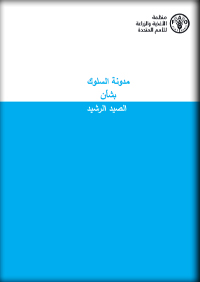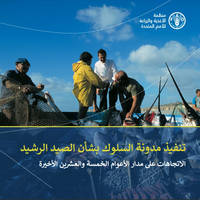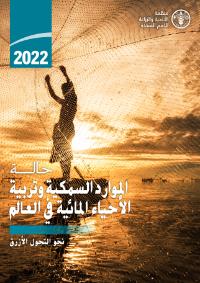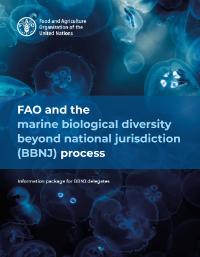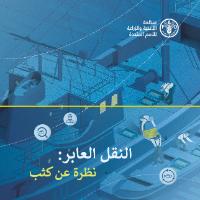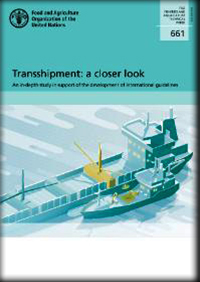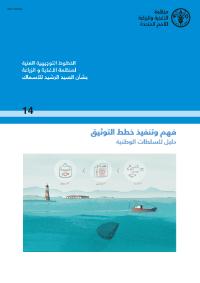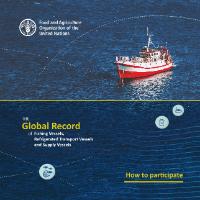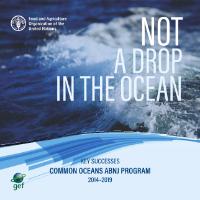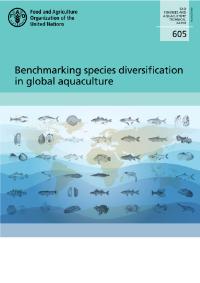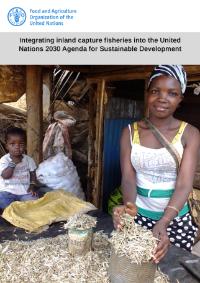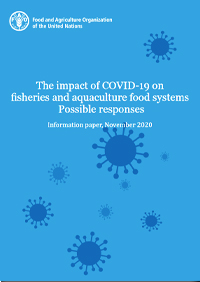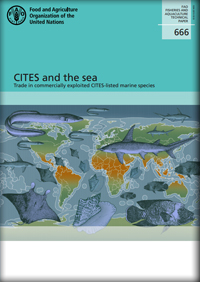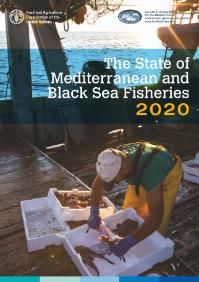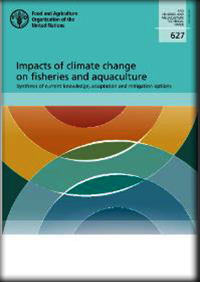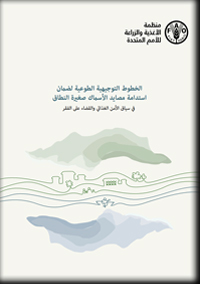المطبوعات الرئيسية
منذ العصور القديمة ، كان صيد الأسماك مصدرًا رئيسيًا للغذاء للبشرية وموفرًا للعمالة والمزايا الاقتصادية لأولئك الذين يمارسون هذا النشاط. كان من المفترض أن تكون ثروة الموارد المائية هبة غير محدودة من الطبيعة. ومع ذلك ، مع زيادة المعرفة والتطور الديناميكي لمصايد الأسماك بعد الحرب العالمية الثانية ، تلاشت هذه الأسطورة أمام إدراك أن الموارد المائية ، على الرغم من تجديدها ، ليست لانهائية وتحتاج إلى إدارتها بشكل صحيح ، إذا كانت تساهم في التغذية. ، الرفاه الاقتصادي والاجتماعي لسكان العالم المتزايدين يجب أن يستمر. أدى إدخال المناطق الاقتصادية الخالصة (EEZ) على نطاق واسع في منتصف السبعينيات واعتماد اتفاقية الأمم المتحدة لقانون البحار في عام 1982 ، بعد مداولات طويلة ، إلى توفير إطار جديد لتحسين إدارة الموارد البحرية. أعطى النظام القانوني الجديد للمحيطات للدول الساحلية حقوقًا ومسؤوليات لإدارة واستخدام مصادر إعادة مصايد الأسماك داخل مناطقها الاقتصادية الخالصة التي تضم حوالي 90 في المائة من مصايد الأسماك البحرية في العالم. إن مثل هذه الولاية الوطنية الممتدة كانت خطوة ضرورية ولكنها غير كافية نحو الإدارة الفعالة والتنمية المستدامة لمصايد الأسماك. لا يزال العديد من الدول الساحلية يواجه تحديات خطيرة ، حيث إنه يفتقر إلى الخبرة والموارد المالية والمادية ، سعت إلى جني فوائد أكبر من مصايد الأسماك داخل مناطقها الاقتصادية الخالصة.
يوفر صيد الأسماك وتربية الأحياء المائية مصدرًا حيويًا للغذاء والتوظيف والتجارة والرفاه الاقتصادي للشعوب حول العالم، للأجيال الحاضرة والمستقبلية، وعليه، ينبغي إجراؤهما بطريقة رشيدة. تحدد مدونة السلوك بشأن الصيد الرشيد (المدونة) المبادئ والمعايير الدولية للممارسات الرشيدة الداعمة للاستغلال والإنتاج المستدامين للموارد المائية الحية، مع إيلاء الاعتبار الواجب لحفظ النظم الإيكولوجية والتنوع البيولوجي، وإدراك أهمية المصايد تغذويًا واقتصاديًا واجتماعيًا وبيئيًا وثقافيًا. وتظل المدونة، بعد مرور خمسة وعشرين عامًا على اعتمادها، وجيهة اليوم كما كانت عليه في 5991. يقدم هذا الكتيب لمحة عن أهداف المدونة وإطار الصكوك والخطوط التوجيهية التي بنيت على المدونة على مدار الأعوام الخمسة والعشرين الماضية ووضعت لأغراض تنفيذ أحكامها واسعة النطاق. كما أنه يقدم رؤى معمقة لبعض الاتجاهات التي تمكن ملاحظتها عبر تقارير الدول الأعضاء في منظمة الأغذية والزراعة بشأن تنفيذ المدونة.
نحو التحول األزرق - يتزامن إصدار عام 2022 من تقرير حالة الموارد السمكية وتربية الأحياء المائية في العالم مع إطلاق عقد الأمم المتحدة للعمل من أجل تحقيق الأهداف العالمية، وعقد الأمم المتحدة لعلوم المحيطات من أجل التنمية المستدامة، وعقد الأمم المتحدة لإصلاح النظم الإيكولوجية. وهو يعرض كيفية إدماج هذه الأحداث وغيرها من أحداث الأمم المتحدة التي لا تقل أهمية عنها، مثل السنة الدولية لمصايد الأسماك وتربية الأحياء المائية الحرفية في عام 2022، ودعمها من خلال التحول الأزرق، وهو مجال يحظى بالأولوية في الإطار الاستراتيجي الجديد لمنظمة الأغذية والزراعة للفترة 2022–2031، وقد جرى تصميمه لتسريع تحقيق خطة التنمية المستدامة لعام 2030 في مجال الأغذية والزراعة.
FAO is actively engaged in areas beyond national jurisdiction (ABNJ) through projects and initiatives for which it provides assistance to Member Nations and relevant international organizations. This document presents information on the work of FAO that is relevant to the BBNJ process, including ongoing processes and initiatives, and lessons learned, which may be informative and useful for BBNJ Delegates and others. This information may also be a useful indication of areas where FAO may assist Member Nations in the implementation of the future international legally binding instrument (ILBI).
هذه الدراسة المتعمقة حول النقل العابر جاءت كاستجابة لأمور طالما شغلت لجنة مصايد الأسماك والمجتمع الدولي بشأن مخاطر النقل العابر والتي تتمثل قي إدخال المصيد غير القانوني دون إبلاغ أو تنظيم في سلسلة التسويق. يعرض هذا الكتيب السمات الأساسية للدراسة بما فيها المقاربة المتبعة والنتائج الرئيسية
An in-depth study in support of the development of international guidelines - Transshipment is a widespread practice in marine capture fisheries, that has recently been associated with a possible risk of introducing catches derived from illegal, unreported and unregulated (IUU) fishing into the supply chain. This in-depth study was carried out in order to shed more light on the practice and make recommendations to inform future discussions on the development of international guidelines for the regulation, monitoring and control of transshipment. The report presents a background to the study, its approach and methodology, the key findings including possible elements of the guidelines, and discusses the main issues from the perspective of the risk of transshipment in supporting IUU fishing.
دليل للسلطات الوطنية - تعد خطط توثيق المصيد (خطط التوثيق) مجرد أداة واحدة ضمن مجموعة من الأدوات المصممة لمكافحة الصيد غيرالقانوني دون إبلاغ ودون تنظيم. وتوفر الخطط وسيلة للدول للتعاون من أجل توفير المعلومات حول شرعية الأسماك أثناء انتقالها عبر سلسلة التوريد، من الصيد إلى السوق. ويعد العديد من البلدان على دراية بمتطلبات المعلومات المحددة بشأن نماذج خطط التوثيق؛ومع ذلك، فإن بعضها أقل وعياً بالحاجة إلى أنظمة وطنية قوية للتثبت من صحة هذه المعلومات والتحقق منها. وتسعى هذه الوثيقة إلى مواءمة أدوات النظام الفرعي للاتصالات البحرية الوطنية الحالية وتحسينها، بالإضافة إلى أنظمة تتبع المنتجات، من أجل دعم تنفيذ خطط توثيق المصيد الوطني الأكثر فعالية وتعزيزها عبر سلسلة التوريد الدولية. تحتوي الوثيقة على فصول حول المعلومات الأساسية القانونية والسياساتية المتعلقة بخطط التوثيق، ومقدمة لميزات ومتطلبات الخطط الحالية، بالإضافة إلى إرشادات حول كيفية التعامل مع متطلبات معلومات وتحديد عناصر البيانات الرئيسية الوطنية. وأخيراً، تقدم سلسلة من التمارين لتقييم القدرات الوطنية ذات الصلة وعمليات التنسيق، بما في ذلك إدارة المعلومات و تبادلها
Key successes Common Oceans ABNJ Program 2014-2019 - To contribute to meet these goals, the Common Oceans ABNJ Program brought together global stakeholders and partners to promote the sustainable use of fisheries and the protection of marine biodiversity in the ABNJ. The Program, funded by the Global Environment Facility (GEF) and led by the Food and Agriculture Organization of the United Nations (FAO), involved the United Nations Environment Programme (UNEP) and the World Bank Group (WBG), as well as Regional Fisheries Management Organizations (RFMOs) and other intergovernmental organizations, national governments, the private sector, civil society and academia. This report presents the results obtained by the Common Oceans ABNJ Program between 2014-2019. It highlights the value, importance and benefits of sustainably managing fisheries and biodiversity conservation in the ABNJ, and how the collateral impact of fishing is less harmful to the marine environment now than when the program started out in 2014.
While diversified aquaculture could reduce both biological and financial risks, the private sector may lack incentives to diversify the species composition of aquaculture production because developing or adopting new species tends to be costly and risky. Conversely, concentrating on the most efficient species can benefit from economies of scale in both production and marketing. With ever-growing concerns over climate change, disease outbreaks, market fluctuations and other uncertainties, species diversification has become an increasingly prominent strategy for sustainable aquaculture development. Policy and planning on species diversification require a holistic, sector-wide perspective to assess the overall prospect of individually promising species that may not be entirely successful when competing for limited resources and markets. The historical experiences of species diversification in global aquaculture can provide guidance for the assessment. This paper develops a benchmarking system to examine species diversification patterns in around 200 countries for three decades to generate information and insights in support of evidence-based policy and planning in aquaculture development. The system uses “effective number of species” (ENS) as a diversity measure that is essentially equivalent to, yet more intuitive than, the widely used Shannon Index. A statistical model is established to estimate a benchmark ENS for each country and construct a benchmarking species diversification index (BSDI) to compare a country’s species diversification with global experiences. Key results are presented and discussed in the main text; and more comprehensive results are documented in Appendix II. The benchmarking system can be used in foresight analyses to help design or refine future production targets (including species composition) in policy and planning for aquaculture development; an example is provided in Appendix I to help practitioners better understand and utilize the system.
وضعت منظمة الأغذية والزراعة خطة العمل العالمية لحفظ الموارد الوراثية المائية للأغذية والزراعة واستخدامها المستدام وتنميتها بناءً على طلب أعضاء هيئة الموارد الوراثية للأغذية والزراعة واستجابةً للاحتياجات و التحديات التي تم تحديدها في التقييم العالمي الأول لحالة الموارد الوراثية المائية للأغذية والزراعة الذي قد تم تطويره بعد مشاورات واسعة مع الأقاليم ، وبعد موافقة الهيئة اعتمده أعضاء المنظمة رسمياً في الدورة 168 لمجلس المنظمة. ان الموارد الوراثية المائية للأغذية والزراعة تطوعية وغير ملزمة وتهدف إلى تعزيز الإدارة الفعالة للموارد الوراثية المائية للأغذية والزراعة لضمان أنها تقدم مساهمة كبيرة في الأمن الغذائي والتنمية المستدامة والتخفيف من حدة الفقر وتكون مستهدفة لدى جميع أصحاب المصلحة في تربية الأحياء المائية، مع التركيز على مديري الموارد وصانعي السياسات. وتتكون الموارد الوراثية المائية للأغذية والزراعة من جزأين. الجزء الأول يقدم ويضع السياق لأهمية الموارد الوراثية المائية لتربية الأحياء المائية المستدامة والأمن الغذائي في المستقبل. بينما الجزء الثاني يحدد الأولويات الإستراتيجية ويوصي بالإجراءات في إطار أربعة مجالات ذات أولوية: 1) التوصيف والجرد والرصد؛ 2) الحفظ والاستخدام المستدام؛ 3) تطوير الموارد الوراثية المائية للاستزراع المائي؛ 4) السياسات والمؤسسات وبناء القدرات والتعاون.
Integrating inland capture fisheries into the United Nations 2030 Agenda for Sustainable Development
This brief presents an overview of the inland capture fisheries sector in the Southern African Development Community (SADC), describes historical and current trends, highlights management successes and failures, identifies common constraints and opportunities, and provides recommendations to ensure that the full potential of the sector is realised. Inland capture fisheries in the SADC region are estimated to support over a million people and contribute significantly to food and nutrition security, employment, livelihoods, and human welfare. They also provide a range of important socio-cultural and ecosystem services that contribute directly to the Sustainable Development Goals (SDGs). These benefits are particularly important in a region that faces a number of dire socioeconomic challenges including extreme poverty, acute malnutrition, and a lack of alternative livelihoods.
The purpose of this information paper is to update information on the COVID-19 pandemic’s impact on the fisheries and aquaculture sector and the measures taken, to inform on the ongoing impact on the fisheries and aquaculture food systems, and responses from seafood providers and governments to counteract the negative impacts on seafood chains.
Fish and fish products are amongst the most highly traded food items in the world today, with most of the world’s countries reporting some fish trade. This assessment of commercial trade in CITES-listed marine species occurs within a broader context of globalization and a more general rapid expansion of the international trade in fish and fish products. It summarizes ten years (2007–2016) of trade in a subset of commercially exploited marine taxa listed in CITES Appendix II. We examine both CITES trade data reporting processes (including information on the practical elements of reporting by CITES Parties) and analyse CITES trade records. The analysis shows how, for Appendix II CITES-listed marine species, the overall number of direct export transactions reported by CITES Parties has increased sevenfold during 1990–2016 and how trade for each CITES-listed marine species sub-group has changed through time. An assessment is made, with assistance from species and trade experts, on the strengths and challenges of collating and reporting on trade in CITES-listed marine species. Additional datasets of relevance to marine species trade are highlighted, and recommendations for further refining and improving CITES trade reporting for marine species are provided.
This third edition of the State of Mediterranean and Black Sea Fisheries provides a comprehensive overview of the status of fisheries in the region, looking at their main features and trends, in order to better inform their management and better examine current and future challenges that they will face in the near future. The aim of this report is to produce a document that could provide useful analysis and direction for decision-making and future action. In this respect, this publication also represents a convenient source of information for the FAO Committee on Fisheries and offers a practical complement to the data provided in the State of World Fisheries and Aquaculture published by the FAO Fisheries and Aquaculture Department. This volume includes seven chapters divided into two sections: a first part on the status and trends of different aspects of Mediterranean and Black Sea fisheries, including fleet, catches, socio-economic variables and bycatch, and a second part that focuses on the management of Mediterranean and Black Sea fisheries, including an overview on small-scale fisheries. This report is based to a large extent on the most up-to-date data available submitted by GFCM contracting and cooperating non-contracting parties, including information on stock status, national catches, fleet and socio-economic information up to 2018. It is also complemented with information from other sources.
The 2015 Paris Climate Agreement recognizes the need for effective and progressive responses to the urgent threat of climate change, through mitigation and adaptation measures, while taking into account the particular vulnerabilities of food production systems. The inclusion of adaptation measures in the fisheries and aquaculture sector is currently hampered by a widespread lack of targeted analyses of the sector’s vulnerabilities to climate change and associated risks, as well as the opportunities and responses available. This report provides the most up-to-date information on the disaggregated impacts of climate change for marine and inland fisheries, and aquaculture, in the context of poverty alleviation and the differential dependency of countries on fish and fishery resources. The work is based on model projections, data analyses, as well as national, regional and basin-scale expert assessments. The results indicate that climate change will lead to significant changes in the availability and trade of fish products, with potentially important geopolitical and economic consequences, especially for those countries most dependent on the sector.
الخطوط التوجيهية الطوعية لضمان استدامة مصايد الأسماك صغيرة النطاق في سياق الأمن الغذائي والقضاء على الفقر

